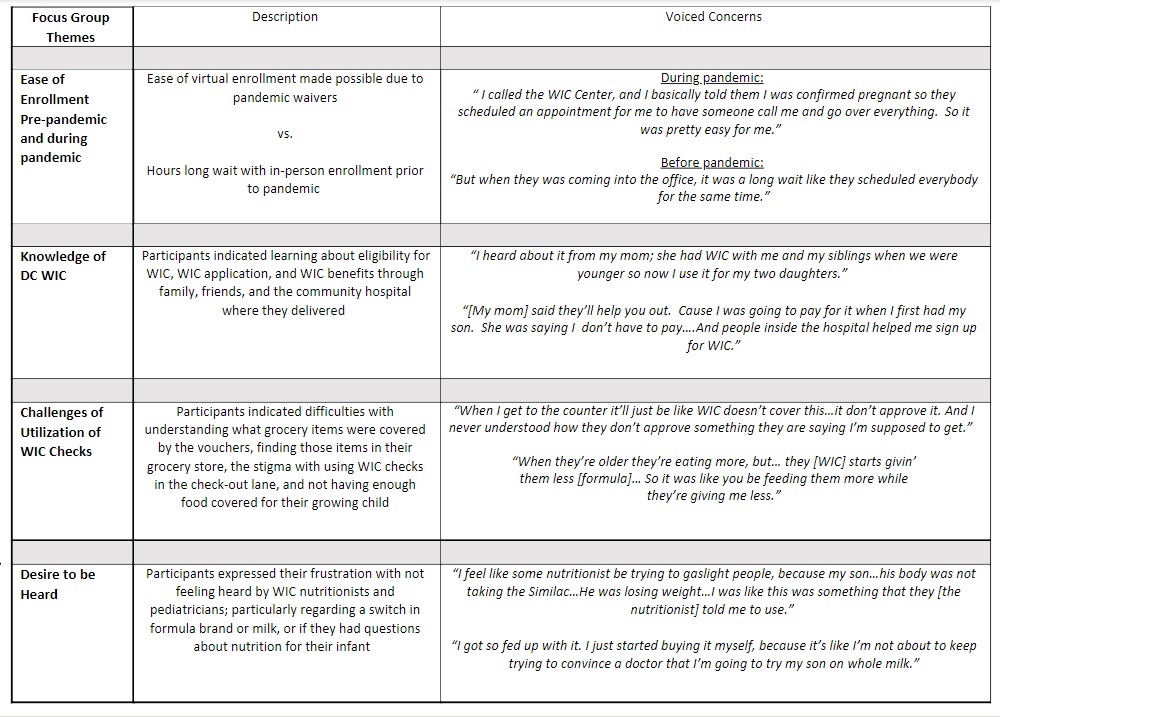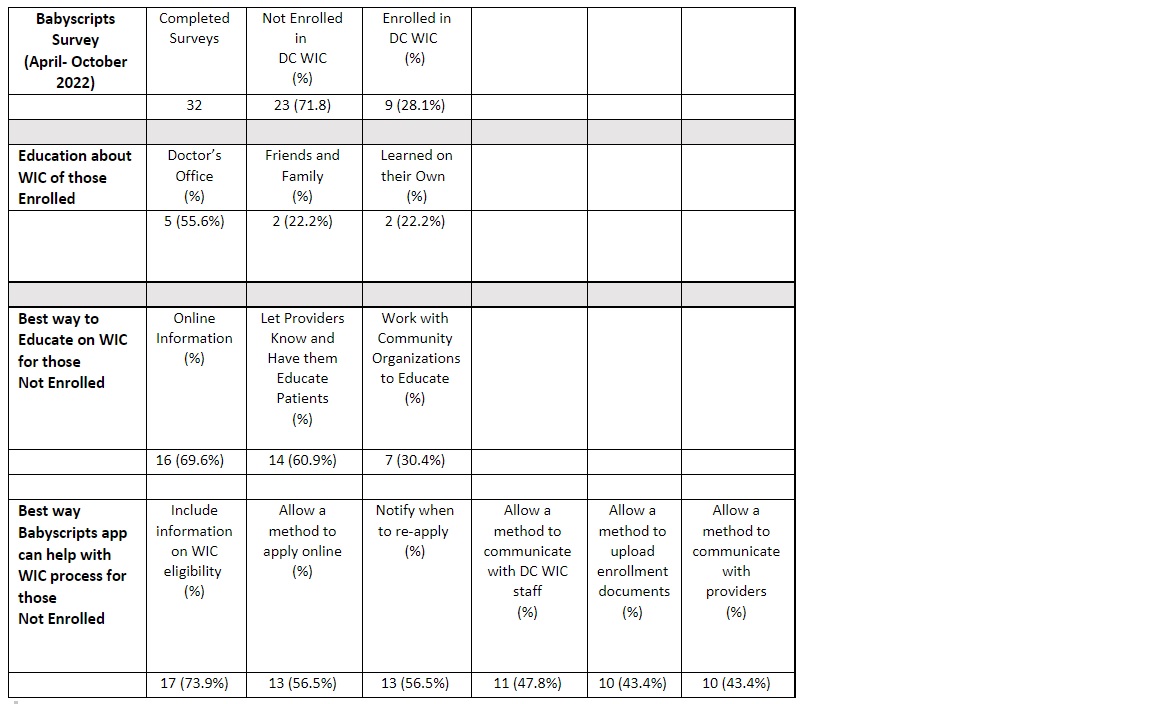Public Health & Prevention
Public Health & Prevention 4
347 - DC WIC Participant Perspectives: What are barriers to WIC enrollment and retention?
Publication Number: 347.448
.jpg)
Karen Ganacias, MD, MPH
Fellow
Medstar Georgetown University Hospital
Washington, District of Columbia, United States
Presenting Author(s)
Background:
The Special Supplemental Nutrition Program for Women Infant and Children (WIC) provides nutritious foods to low-income, women, infants and children up to age 5.1 Though enrollment in WIC has been beneficial to participating families, enrollment in WIC remains sub-optimal, 1 ranging from 55% national coverage in 2017 to 57% in 2019.2
While the literature points to structural barriers and opportunities to improve WIC coverage,3,4 there is less patient-centered research examining the experiences of families. A collaborative partnership was formed between DC WIC and DC AAP with the goal of understanding and improving WIC enrollment.
Objective: This study was conducted to obtain first-hand patient perspectives of the WIC enrollment process and utilization of benefits using both survey data and focus groups.
Design/Methods: Mixed-methods study using focus groups and surveys. 6 focus groups with 30 participants were held in February to March 2022 virtually, and analyzed by thematic, inductive analysis. Babyscripts, a virtual maternity app, conducted a survey of their enrollees characterizing WIC enrollment and engagement for the purposes of content enhancement from April- October 2022. Aggregated de-identified data was generated from the surveys completed.
Results:
Themes derived from focus group discussion included: 1. A difference between ease of enrollment pre pandemic and during the pandemic with improved access with remote options. 2. Identified sources of information on DC WIC largely from family and friends; 3. Difficulty with utilization of WIC vouchers including stigma and matching allowable grocery items with store availability; 4. Desire for needs to be heard better by pediatric providers and WIC staff and for improved communication between the two. See Figure 1.
31 people completed the survey conducted through Babyscripts. 71% were not enrolled in DC WIC; 29% were enrolled. 55.6% of individuals learned about DC WIC through their doctor’s office. Of those who did not have WIC, 69.6% stated the best way to learn about WIC would be to have educational resources online, while 60.9% preferred to have providers educate. 43.4% of participants stated a helpful way Babyscripts could help improve the DC WIC process would be to allow a method of communication to their healthcare providers. See Figure 2.
Conclusion(s): Challenges remain for participants in utilizing WIC benefits. Participants voiced a desire for bi-directional communication between providers and WIC. Pediatric providers could play a role in not only WIC enrollment but also WIC retention of benefits.


